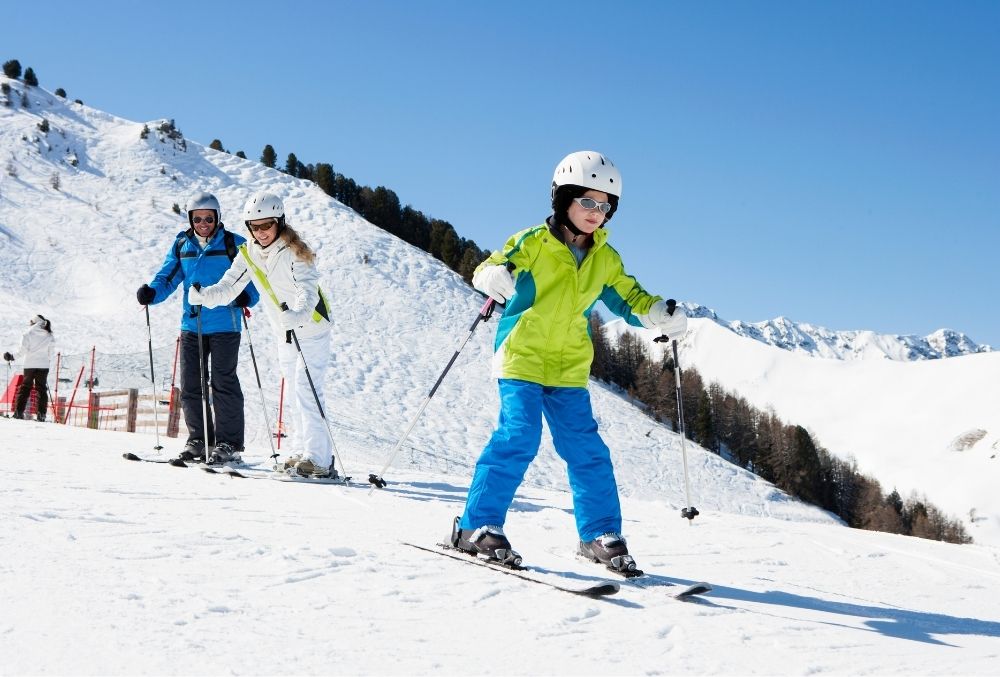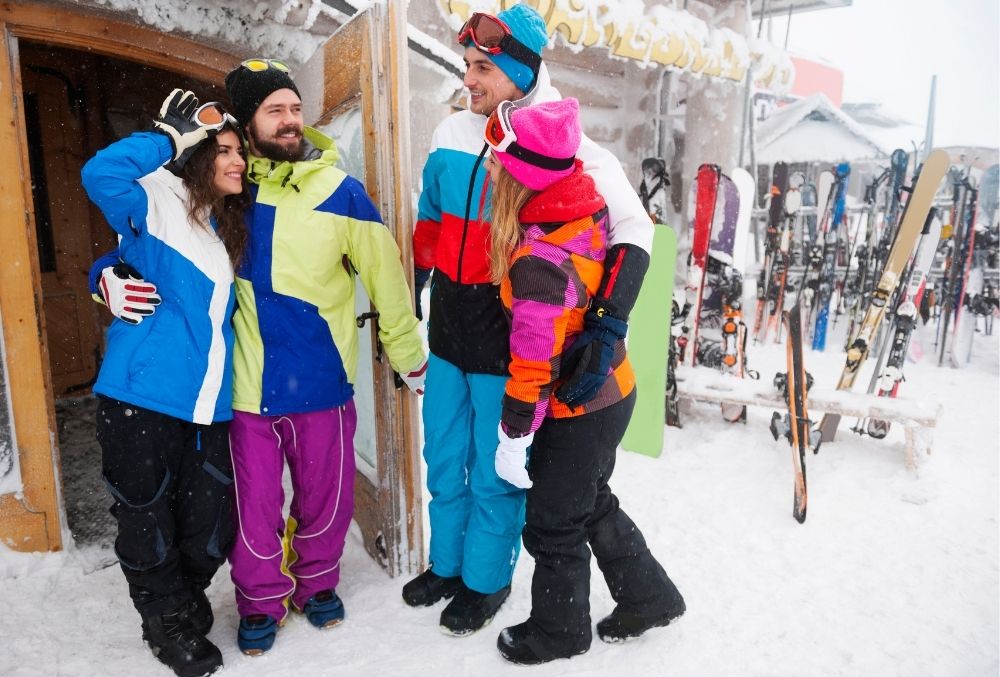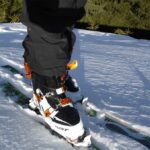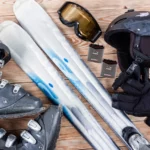Skiing is one of the most exciting and amazing activities, and many people become totally addicted to the thrill and beauty the sport introduces them to.
While skiing is one of the best types of holiday or trip you can go on, especially if you’re into sport and amazing scenery, many people find skiing intimidating and see it as something prohibitively expensive.

While it’s true that skiing can be expensive, and is one of the more middle-class types of vacation in general, it is by no means out of reach for the average person, and there are many ways to budget and prepare for a ski trip to make the costs much more manageable and reasonable.
It’s impossible to prepare and budget for a ski trip without first understanding the various costs, prices, and what you’re getting for your money.
Many people don’t understand that there are many hidden costs to skiing, but there are always ways to help make a trip much cheaper, if you know where to find value.
In this guide, we’re going to look at how much a ski trip costs, taking into account every aspect of an amazing ski trip as well as how you can save money so that you have more to blow on beers at the apres-ski!
But first, let’s look at the key costs in skiing, how much they tend to amount to, and the various factors that can play into them.
Travel
Travel is an interesting part of the ski trip, as depending on your destination it can be one of the cheapest parts of your trip or one of the most expensive.
Naturally, this makes it difficult to give precise prices on travel costs, as not only do people tend to choose locations all over the world, but your point of origin may make travel much easier and cheaper depending on whether you live relatively close to a ski resort, or want to travel somewhere further away, as well as the costs of air travel, fuel and other factors that can lead to price fluctuations in this aspect of travel.
Nonetheless, it’s important to get some fundamental information in place to get a better idea of how much to budget for travel in general, and what you can expect.
Depending on where you’re heading, flights out to ski resorts either domestically or internationally can run from several hundred dollars to a thousand, depending on where you’re flying to and what class you need to fly.
Another important factor to consider is whether you’re bringing your own skis and equipment, as there are additional costs and baggage fees associated with transporting your own skiing kit during air travel.
If you’re traveling domestically you may be able to take other forms of transportation, drive, or even car share with fellow skiers splitting up costs and massively reducing the cost of travel as an element in your budget.
If you’re heading to Europe, Japan, or even Canada to Ski you can expect fairly significant costs for flying, but driving to a resort, even if it’s a few states over, can save you a ton of cash right out of the gate.
Transfers
If you do fly, transfers are a significant cost that many people totally forget about leaving their budgets short before the vacation has even begun.
Transfers are the means by which skiers or tourists get from the airport to the actual resort they’re staying in. Due to the scarcity of places, as well as the number of people trying to get from A to B, prices can be significantly higher than you might expect.
Dedicated transfer companies are often cheaper than using taxis, however, if there is good access public transport can be even cheaper, although much more awkward and time-consuming to use.
If you go for a normal transfer company, you can expect to pay around $100 to $200 dollars for transfers depending on the distances you’re traveling, while taxis can be significantly more, and public transport can be significantly cheaper.
Accommodation
After actually arriving at the ski resort, you’re going to need somewhere to stay, as you won’t survive long exposure to the freezing temperatures most ski resorts are subjected to.
Accommodation is probably one of the largest expenses after travel, and with good reason, as ski resorts are quite exclusive and have very limited space, particularly at the more popular resorts.
Lesser-known ski resorts can offer savings, but generally, you can expect to pay several hundred dollars for even the most basic accommodation at the resort.
For larger groups, a great way to save money and get access to a higher quality of living on the mountain is to hire a chalet and fill it with as many friends and family members as possible to split the cost while living in a much nicer space than the tiny apartments and hotel rooms cheaper ski resort accommodations offer.
Ski Hire
After accommodation and flights, ski hire is going to be one of your main expenditures.
Assuming you don’t own your own gear (which is very expensive in the short term and only offers value to people who ski every year or several times a year) renting your ski gear is essential.
Most people rent skis, ski boots, poles, and sometimes even helmets, and the costs can easily accumulate.

The cost of per day rental can easily rack up, so unless you’re on a very short stay, go for a week-long rental. Generally, skis cost around $300 dollars to rent for a period, while boots are around $200 and poles will be around $50. If the gear gets damaged you may not get your deposit back, but always check with your rental company.
Naturally, renting at the resort is much more expensive, so you can reduce these costs by renting from shops not on the resort but relatively nearby, or even buying your own gear if you’re an avid skier.
More popular resorts will generally have higher rental fees too, so you can make this cheaper by hitting a quieter resort.
Lift Pass
Even after all this, you’re still not ready to ski, and you won’t be getting near the slopes without a lift pass.
This is the expensive little piece of plastic that permits you to get on the various gondolas and ski lifts that transport people around the mountains and pistes of a ski resort. Without them, you won’t be able to get anywhere, so they’re an absolute must-have if you want to actually be able to ski.
The costs can vary depending on the popularity of the resort, its size, and the facilities available, but generally, they cost around $60 to $80 a day or anywhere from $150 to $300 a week.
Generally, it’s better to buy a longer pass if you’re having an extended stay, as daily passes don’t offer good value at all.
Ski Lessons
You may or may not need lessons, but if you do they can be fairly expensive.
Set aside anywhere from $70 an hour if you want solo lessons or $30 per hour for group lessons. Some ski schools offer decent package deals and offers which can give significant savings if you take out a larger block of lessons.
Food
Food prices vary depending on the location and whether you’re catered or not. Most ski resorts expect you to eat out a lot, so there are tons of competing restaurants at resorts, but nonetheless, prices can be high, particularly at peak times in the season.
Depending on the length of your trip you may need to save upwards of $500 dollars for food for a week-long trip, as skiing requires a lot of energy.
Spending Money
Skiing isn’t all about skiing itself. There are tons of bars, partying, and other activities to enjoy at a ski resort, so setting aside some cash to enjoy yourself and party or head to the local spa for a massage can make your trip even more enjoyable.
Allowing a decent amount of your budget for this is key, and should ideally be kept separate from your food and drink budget to make it easier for you to manage.
Ski Clothing
Most people buy their own ski clothing, but it is possible to rent if you want to.
The best way to save money is to purchase second-hand gear or wait until the big sales at the end of each skiing season.
Ski jackets can cost upwards of $100, as can salopettes. Gloves and other winter gear are fairly pricey too, so make sure you consider the expenses here as they can rapidly accumulate.
Skiing Insurance
Skiing is dangerous, even for total beginners on the bunny slopes.
While it may not be compulsory in certain areas, generally it’s good practice to take out some form of holiday insurance or skiing insurance to ensure that if you have an accident on the mountain you don’t incur the hefty fees of being rescued and treated, which can be very significant.
Ski insurance is generally quite affordable so don’t avoid this as it could save you thousands of dollars.
Final Thoughts
In short, skiing is definitely costly, but by no means as expensive as some people think if you ski locally, borrow or use second-hand gear and clothing, and try to split the cost of a chalet or apartment between a large group.
The costs can vary widely depending on all of the factors listed above, but at the cheapest level, you can expect a ski trip to cost somewhere around $1500 to $2000, while more lavish trips can easily end up costing two or three times this amount quite easily depending on where you ski and other important factors.
Regardless of what your budget is, if you plan well you can make significant savings and get the most out of your ski trip regardless of your budget, so don’t be intimidated and miss out on one of the most fun experiences available!
- How to Train in the Summer for Cross-Country Skiing: Off-Season Strategies for Peak Performance - April 19, 2024
- Ski Lift Ticket Prices in Colorado [For 2024 Season] - January 26, 2024
- How to Choose Classic Cross-Country Skis: A Guide for Beginners - November 10, 2023








